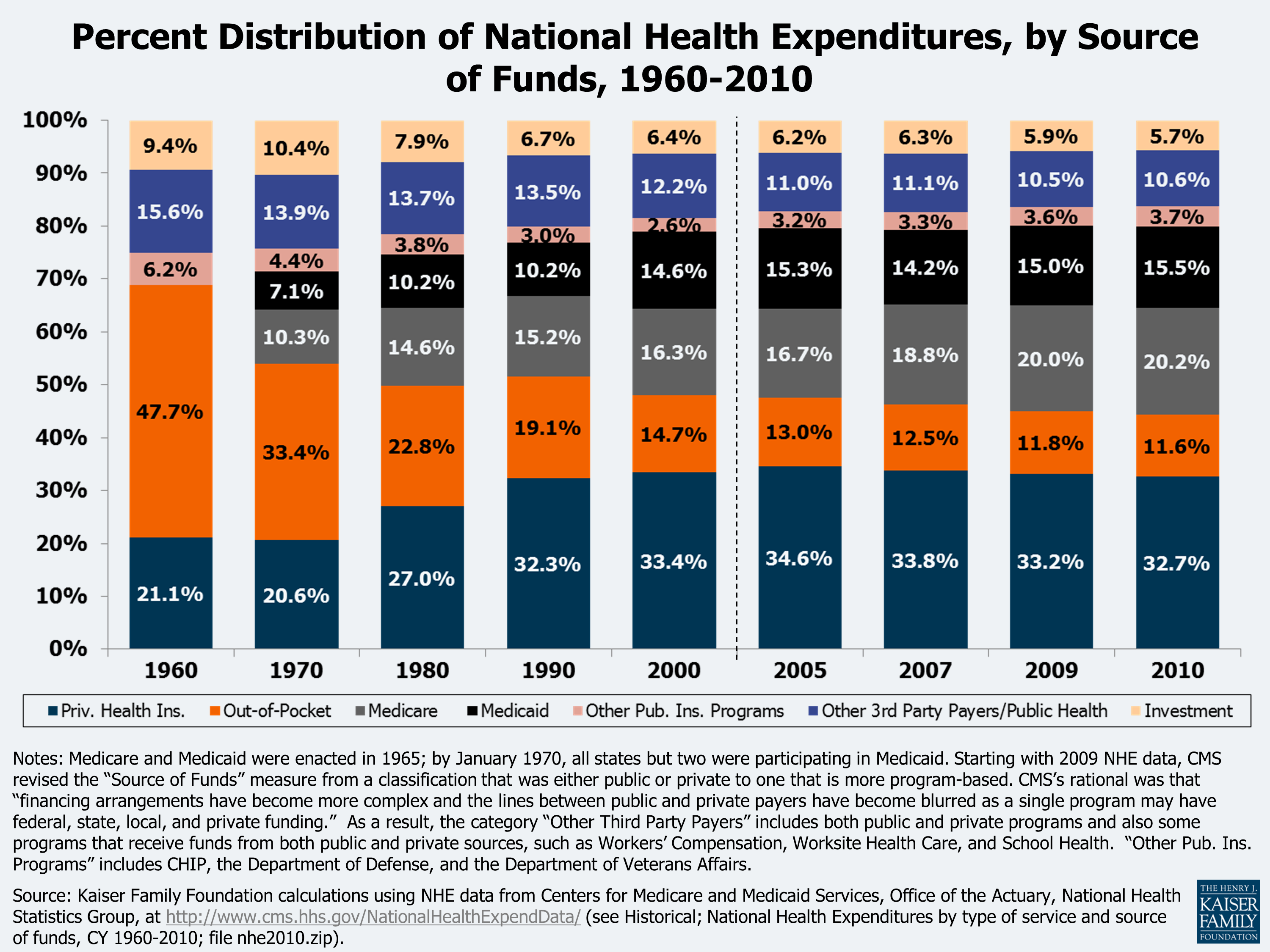Public Payers
A public payer is the federal or state government. There are several types of publicly funded insurance: Medicare, Medicaid, the Children’s Health Insurance Program (CHIP) and the Veteran’s Administration.
Medicare
- Part A (Hospital Insurance) helps covers inpatient care in hospitals, long-term facilities, hospice and home Healthcare. People are automatically enrolled in Part A when they turn 65.
- Part B (Medical Insurance) is voluntary and helps pay for doctors’ services and outpatient care. Most people must pay a monthly premium based on income, which can be up to about $100 per month. When a person is eligible for Medicare, they must sign up for Part B. They will not be automatically enrolled.
- Part C (a combination of Part A and B) is Medicare Advantage, a combination of Medicare parts A and B. Part C allows patients to get insurance through private healthcare plans such as HMO’s, PPO’s and private fee-for-service plans. Many Medicare Advantage Plans also offer prescription drug coverage.
- Part D (Prescription drug coverage) helps cover the cost of prescription drugs.
Medicaid
Children's Health Insurance Program (CHIP)
CHIP provides low-cost health insurance coverage to children and pregnant women in families who earn too much to qualify for Medicaid but cannot afford to purchase private health insurance. It is funded through a state and federal partnership. Some states have expanded their Medicaid program and do not have a separate CHIP program.
Veteran's Administration (VA)
Other Department of Health and Human Services agencies
Department of Health and Human Services (HHS) Agencies
The Department of Health and Human Services oversees many federal programs that promote public health and provide healthcare services. The programs you work under may be funded by these agencies.
What is the Department of Health and Human Services (HHS)?
The Department of Health and Human Services (HHS) is the federal department that administers all federal programs dealing with health and welfare. HHS manages over 300 programs and administers more grant dollars than all other federal agencies combined. The mission of HHS is to promote the health of Americans and provides human services. Its 11 divisions offer a variety services including research, improving public health, food and drug safety, healthcare related grants, healthcare insurance and many others. Some HHS agencies include:
- Administration on Aging (AoA) deals with long-term care and programs for older adults to help them maintain their health and independence.
- Administration for Children and Families (ACF) promotes the economic and social well-being of families, children, individuals, and communities. ACF does not directly deliver services, but give grants to state and local governments, not-for-profit organizations and Indian Tribes.
- Centers for Disease Control and Prevention (CDC) works to prevent disease and protect public health and safety. The CDC finds out what makes people sick and learns ways to protect them. The CDC also does research and develops public health policies related to infectious disease, environmental health and workplace safety.
- Centers for Medicare & Medicaid Services (CMS) administers the Medicare program and works with states to administer the Medicaid and the Children’s Health Insurance Program (CHIP).
- Food and Drug Administration (FDA) regulates prescription drugs, veterinary drugs, vaccines, medical devices, the U.S. food supply, cosmetics, dietary supplements and tobacco products.
- Health Resources and Services Administration (HRSA) provides healthcare to people who are uninsured. HRSA-funded health centers are in most cities and many rural areas. They provide check-ups, immunizations, medical treatment, dental care, prescription drugs, mental Healthcare and substance abuse care. Patients pay what they can afford, based on their income. HRSA also offers training for healthcare professionals and community service workers in rural communities.
- Indian Health Services (IHS) provides medical and public health funding and services to American Indians and Alaskan Natives.
- National Institutes of Health (NIH) studies and funds research on disease. The NIH manages 27 institutes and centers including the National Cancer Institute (NCI), National Library of Medicine, National Institute on Aging, and the National Institute of Mental Health.

Trends in Private and Public Health Coverage
Private sector accounts for 33% of the total healthcare insurance today in United States, and there is certainly a growing trend in this domain in the coming years.
Let’s find out the distribution between private and public health insurance:

Source: Health Care Costs (Henry J. Kaiser Family Foundation)